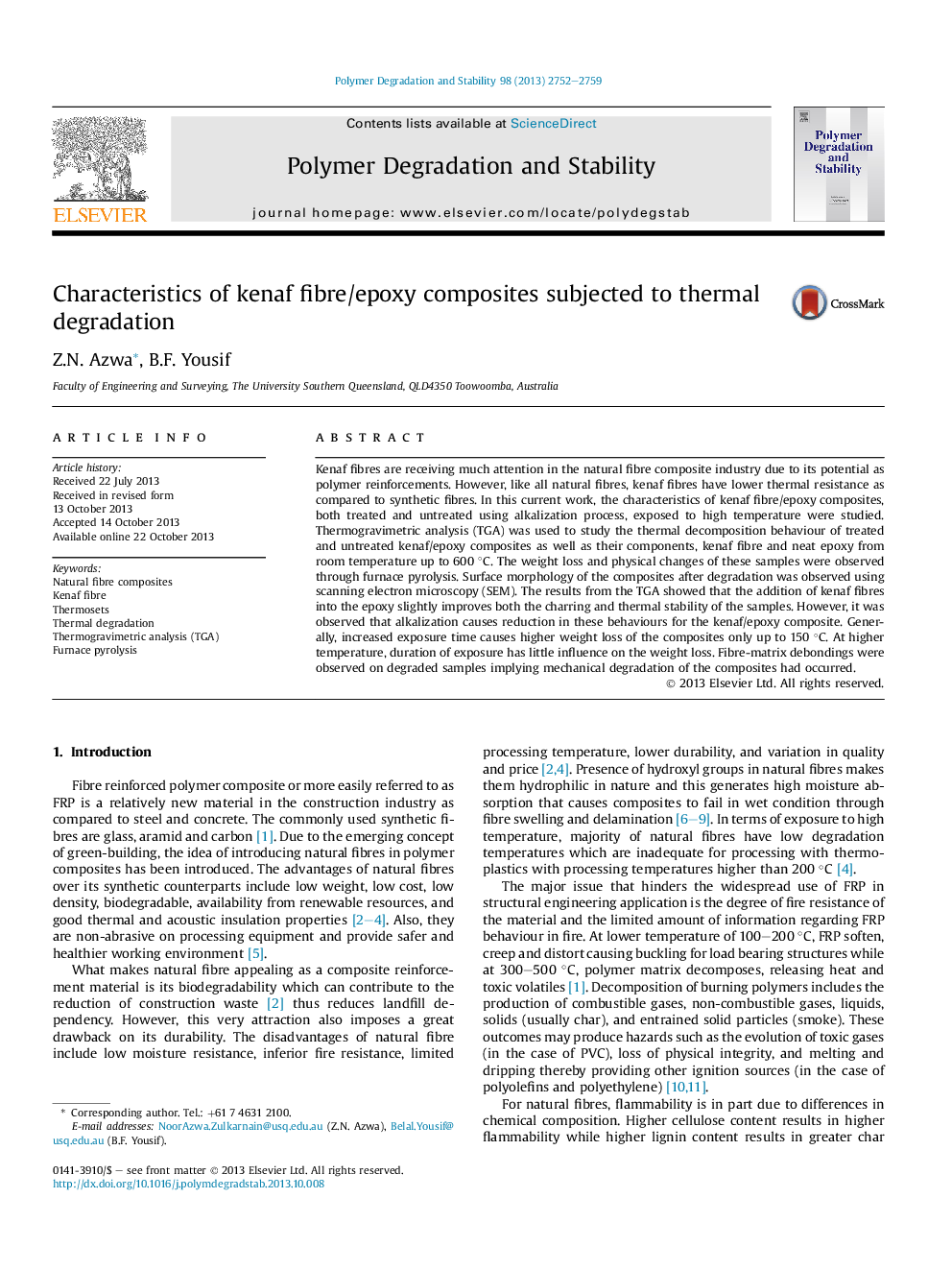| Article ID | Journal | Published Year | Pages | File Type |
|---|---|---|---|---|
| 5202189 | Polymer Degradation and Stability | 2013 | 8 Pages |
Abstract
Kenaf fibres are receiving much attention in the natural fibre composite industry due to its potential as polymer reinforcements. However, like all natural fibres, kenaf fibres have lower thermal resistance as compared to synthetic fibres. In this current work, the characteristics of kenaf fibre/epoxy composites, both treated and untreated using alkalization process, exposed to high temperature were studied. Thermogravimetric analysis (TGA) was used to study the thermal decomposition behaviour of treated and untreated kenaf/epoxy composites as well as their components, kenaf fibre and neat epoxy from room temperature up to 600 °C. The weight loss and physical changes of these samples were observed through furnace pyrolysis. Surface morphology of the composites after degradation was observed using scanning electron microscopy (SEM). The results from the TGA showed that the addition of kenaf fibres into the epoxy slightly improves both the charring and thermal stability of the samples. However, it was observed that alkalization causes reduction in these behaviours for the kenaf/epoxy composite. Generally, increased exposure time causes higher weight loss of the composites only up to 150 °C. At higher temperature, duration of exposure has little influence on the weight loss. Fibre-matrix debondings were observed on degraded samples implying mechanical degradation of the composites had occurred.
Keywords
Related Topics
Physical Sciences and Engineering
Chemistry
Organic Chemistry
Authors
Z.N. Azwa, B.F. Yousif,
